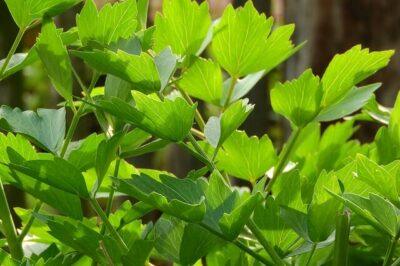Who doesn’t love fresh produce straight out of the garden? Crisp, green snap peas, juicy tomatoes, crunchy zucchini and cool refreshing cucumbers are worth our gardening efforts.
But wouldn’t it be great to reap the rewards of a harvest year after year with just one planting effort? You can, with edible perennials. Edible perennials can decrease your annual workload while you still get to harvest some delicious crops.
Here are nine edible perennials to consider adding to your garden.
1. Asparagus. Plant once and enjoy fresh asparagus for years with minimal work. Asparagus can take three years to become established and ready to harvest, but they can produce for as many as 20 years before needing to be replaced. Once you plant the initial bed(s) of asparagus, all you need to do is mulch annually, and enjoy fresh asparagus year after year.
2. Rhubarb. This perennial is frequently used in jams and desserts, but it also can be used in savory dishes. The leaves and roots are poisonous, so use only the stems. Rhubarb should be divided every 3 to 4 years during the spring or fall when the plants are dormant.
Looking For Non-GMO Herb Seeds? Get Them From A Company You Can Trust!
3. Jerusalem artichoke. These are a species of sunflower with a tuberous root similar to a potato when cooked, or a water chestnut when eaten raw. They store sugars as inulin rather than starch, so they could be beneficial to those with diabetes or those trying to cut down on sugars and starches. When harvesting, just leave the smallest tubers, and you will have another crop the following year. Cutting the flowers and enjoying them as cut flowers later in the season will prevent them from spreading seeds, and the plant will put its energy into producing bigger roots.
4. Chives. Like many herbs, chives can be grown as a perennial. If you live in cold climates, then you can bring your chives indoors during the winter months. Just transplant them into a pot and put them in a warm place with plenty of light. Clean the dirt off the roots so you are not bringing in any bugs or diseases, and then plant the chives in a good potting soil mix. Use the flowers and stems to add flavor to lots of foods, including chive vinegar and chive butter.
5. Walking onion (Egyptian walking onion). This plant forms bulbs at the top of its stems, which then fall over onto the ground as they get bigger and heavier, and if the conditions are right, will grow a new plant from the bulb. You can eat the top bulbs, the green stems of the onion, and the underground bulb. Just make sure to leave some to grow for the following year.
6. Lovage. Similar to celery, lovage can be used in soups and salads, and every part of the plant is edible. Lovage is easier to grow than celery and can grow up to six-feet tall with proper growing conditions, so give it plenty of space. Lovage should be divided every few years just like rhubarb.
7. French sorrel. The broad green leaves of the French sorrel plant are tangy and sour, so you want to use this one in combination with other ingredients. Just like any other herb, use it sparingly as you get a feeling for how much you need to use.
8. Chinese artichoke (crosne). This is a member of the mint family and spreads through rhizomes underground. Just like mint, it can be invasive, so consider giving crosne its own space rather than mixing with other plants. The tubers are small but plentiful, and like the Jerusalem artichoke, flowering reduces the yield of tubers
9. Chrysanthemums. All chrysanthemums are edible, but the taste can vary widely. Garland chrysanthemum, or Chrysanthemum coronarium, is the most popular for eating because of its mild flavor. People use the leaves and the flowers of this plant to enhance salads and stir fries.
What would you add to our list? Share your tips in the section below:
 Off The Grid News Better Ideas For Off The Grid Living
Off The Grid News Better Ideas For Off The Grid Living





